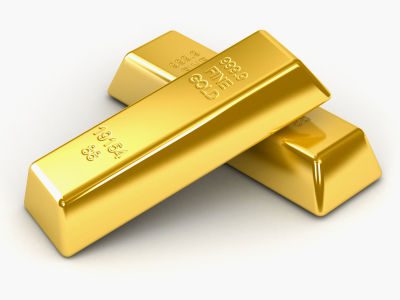I am increasingly confident that the consequences of fragile sovereign debt, precious metals market manipulation, insufficient physical supply, and the need for a safe haven investment refuge, will contribute to rampant price inflation and drive precious metals bullion and mining stock to a parabolic peak price of $10,000 sometime in 2012 or 2013 at the latest. You may think my views are crazy or perhaps that my imagination is way out of hand or, at best, that I don’t have access to the appropriate reality checks but the reality of the situation is that we are going to see $10,000 gold in the next year (or two)! Read on for what I believe to be very sound reasons for coming to such a conclusion. Words: 1102
manipulation, insufficient physical supply, and the need for a safe haven investment refuge, will contribute to rampant price inflation and drive precious metals bullion and mining stock to a parabolic peak price of $10,000 sometime in 2012 or 2013 at the latest. You may think my views are crazy or perhaps that my imagination is way out of hand or, at best, that I don’t have access to the appropriate reality checks but the reality of the situation is that we are going to see $10,000 gold in the next year (or two)! Read on for what I believe to be very sound reasons for coming to such a conclusion. Words: 1102
So says Arnold Bock in an updated version of an article written back in 2010 in which the passage of time has only strengthened his assertion. Please note that this paragraph must be included in any article re-posting to avoid copyright infringement.
Bock goes on to say:
Below is my assessment of the situation and rationale for my not so outlandish forecast/prediction:
THE CAUSES
1. History is No Guide
Gold has only been trading freely since President Nixon’s 1971 decision to deny gold to the French and others attempting to repatriate their paper dollars for the metal. As such, there has been a scant forty years of gold production and trading since it was detached from supporting paper money. This period has also been marked by substantially higher monetary and price inflation as well as currency devaluation.
2. Market Manipulation
The Commodity Futures Trading Commission (CFTC) held a major hearing in 2010 which blew the doors off bullion metals futures trading markets in terms of what was revealed publically. I predict this public hearing will be viewed in the period ahead as the precious metals price liberation event of the decade.
More recently, Eric Sprott has pointed out in an article entitled Sprott: Shocking Shenanigans in Paper vs. Physical Silver Market that the annual production of physical silver is traded in the futures markets in a space of one to three days. That means the virtually all the trading in the futures markets is about trading phantom paper supported by absolutely nothing. I ask, is this make sense? Is it a valid method of establishing the price of the real precious metals?
It is commonly known that JP Morgan Chase in the major player in commodities futures markets trading. Not only do they take massive naked short positions (betting that prices will fall), they do it with large substantial leverage. What isn’t as well known though is that Chase acts as the agent for the Federal Reserve Board and other central banks in ‘managing’ the precious metals markets on their behalf. Central banks want ‘orderly’ precious metals markets and prices and currencies which don’t gyrate wildly. Only then can they achieve stealth inflation through financial repression in their monetary policy which is so beneficial in servicing debt.
3. Insufficient Physical Inventories
While it is normal for traders to roll their expiring contracts over into new paper trades, most traders accept cash in settlement rather than the metal. At hearing of the CFTC in 2010 Jeff Christian inadvertently confirmed that there is little bullion in storage at the London Metals Exchange or New York’s COMEX to back the metals trading. (See a previous article I wrote entitled Where’s the Gold!?) justifying this fact by noting that less than one ounce of one hundred traded is paid out in physical metal. This revelation confirmed a much worse reality than even critics, such as the Gold Anti-Trust Action Committee (GATA), had expected. It seems too that the Asian and Mid East buyers and owners of bullion have been removing gold from their dealers’ vaults and are taking it “home” thus leaving much less than previously thought in the London, New York and Toronto vaults.
In addition to what looks like a production peak in the gold mining industry (production has fallen in 5 of the last 8 years), central banks have for the first time recently become net purchasers (having bought more gold last year– 425 tons – than at any time since 1964).
The single largest purchasers of metal these days, other than central banks, are the bullion ETF’s (Exchange Traded Funds) which ostensibly have their metal inventories in vaults. These relatively new investment vehicles, unfortunately, are not transparent in their business practices. Regular audits by reputable accounting firms and allocated and segregated bullion inventories stored in reputable vaults are opaque at best. This begs the question:“Do the large ETF bullion funds actually have the metal they purport to own, or is their inventory more the ‘paper gold’ variety in which bullion futures trading exchanges specialize?”
THE EFFECT
- The revelation, outlined above, that there is insufficient physical inventory to meet new investment demand for ownership and delivery of physical bullion, is about to blow the price lid skyward.
- As public awareness of sovereign debt mounts, it will drive home the reality of mounting government insolvency.
- Confidence in paper currencies will wilt commensurately.
- Investment demand for gold as real money as a safe haven investment will expand exponentially.
- These events began in 2011, should accelerate in 2012 and extend further out toward 2015 before demand is satiated.
- Dramatic price increases in gold and silver will at that point be encouraged by the unstated desire of central banks and politicians to devalue their currencies in order to assist them in meeting their debt and unfunded liabilities because rising precious metals prices effectively devalues associated paper money.
- A new world ‘Reserve Currency’, composed of a trade weighted group of currencies and a gold component for credibility, will be introduced to replace a troubled US dollar. This new and higher value currency will be used to price and settle accounts in the instance of international trade. National and regional currencies will continue to be used for domestic purposes, but will be conveniently devalued by both appreciating precious metals bullion and the new world reserve currency.
After the 2008/2009 crash, governments bailed out their failing financial institutions and investment banks through a variety of innovative measures. The next time round most governments will not be in a position to do it yet again. Even more troubling, the IMF (International Monetary Fund) will not be capable of rescuing the increasing number of insolvent governments and their financial institutions.
CONCLUSION
The circumstances immediately ahead are largely unprecedented. History is therefore only marginally useful as our guide to the future price of precious metals. We are now in genuinely unchartered territory. As such, as I said in the oppening paragraph, I fully expect gold to gold parabolic in 2012/2013 topping out at $10,000.
Sign-up for Automatic Receipt of Articles in your Inbox or via
FACEBOOK | and/or
TWITTER so as not to miss any of the best financial articles on the internet edited for clarity and brevity to ensure you a fast an easy read.
Related Articles:
1. Alf Field: Gold Going to $4,500/ozt. in Next Wave Towards Parabolic Peak
Once this present correction in gold has been completed it should [undergo] the largest and strongest wave in the entire gold bull market…to around $4,500 with only two 13% corrections along the way. [Let me explain how I came to that conclusion.] Words: 1900
2. Goldrunner: Gold on the Cusp of $3,000+: An Update
Our work with Gold is based on a “Model” off the late 70’s Gold Bull that has been replicating nicely since we started the Fractal Work with Gold back in 2002 and 2003. Short-term volatile moves in Gold, as we have seen over the past weeks, do not affect our projections based on the model, leaving the expectation of a move in Gold up to $3,000 into mid-year based intact as outlined in our previous article entitled Gold Tsunami: on the Cusp of $3000+? Words: 996
3. New Analysis Suggests a Parabolic Rise in Price of Gold to $4,380/ozt.
According to my 2000 calculations, if interest rates and inflation stay constant over the next 2 years, we could expect to see (with 95.2% certainty) a parabolic peak price for gold of $4,380 per troy ounce by then! Let me explain what assumptions I made and the methods I undertook to arrive at that number and you can decide just how realistic it is. Words: 740
4. Deja Vu? Is Gold Just in a Correcting Phase on Its Way to Parabolic Peak of $4,294?
The current volatility in the precious metals market doesn’t necessarily indicate a change in secular direction. [In fact,] if today’s gold price was to rise by the same degree over the next 14 months [as it did from the beginning of 1979 into 1980, it would hit $4294/ozt. by Jan 2013! Let me explain.] Words: 420
5. Where are We Now in the Bull Market in Gold – and How Many Years/Months are Left?
Gold is in a bull market and, [believe it or not,] so are the gold stocks despite their struggle as a group to outperform gold… but [neither] is anywhere close to a bubble, nor the speculative zeal we saw in 2006-2007. Thus, it begs the question” “What lies ahead and when can we expect the initial stages of a bubble?” To figure this out we first need to get an idea of how long the bull market will last and then where we are now based on various indice analyses. [Below I do just that.] Words: 785
6. Is Gold On Its Way to $3,000, $5,000, $10,000 or Even Higher? These Analysts Think So
143 analysts maintain that gold will eventually reach a parabolic peak price of at least $3,000/ozt. before the bubble bursts. Of those 143 a total of 103 see gold achieving a price of at least $5,000/ozt. and 20 predict that gold will reach a parabolic peak price of $10,000 per troy ounce or more. Take a look here at who is projecting what, by when and why. Words: 745
 munKNEE.com Your Key to Making Money
munKNEE.com Your Key to Making Money




But….if gold is going to $10,000, why should I only have “7 to 15% in Precious Metals” in total?